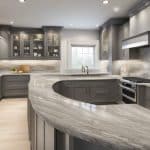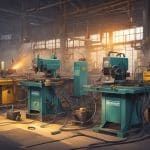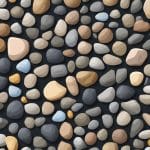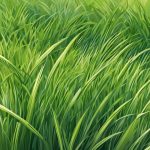Types Of Siding
Siding is an essential part of any home’s exterior, providing protection from the elements and adding to its overall aesthetic appeal. There are various types of siding materials available, each with its own unique features, benefits, and drawbacks. Homeowners must consider several factors before choosing the right siding material for their home, including performance and maintenance, installation and cost considerations, design and aesthetic choices, and environmental impact and sustainability.
When it comes to types of siding materials, there are several options available, including vinyl, wood, metal, fiber cement, stone, and brick. Each material has its own set of advantages and disadvantages, ranging from cost and durability to maintenance and eco-friendliness. Homeowners must weigh these factors carefully before making a decision.
Siding performance and maintenance are crucial considerations when choosing the right siding material. Some materials require more maintenance than others, while some are more durable and weather-resistant. Additionally, installation and cost considerations are important factors to keep in mind, as some materials are more expensive to install than others. Finally, design and aesthetic choices play a significant role in the overall look and feel of a home’s exterior, and homeowners must choose a siding material that complements their home’s architectural style.
Key Takeaways
- Homeowners must consider several factors before choosing the right siding material for their home, including performance and maintenance, installation and cost considerations, design and aesthetic choices, and environmental impact and sustainability.
- There are various types of siding materials available, each with its own unique features, benefits, and drawbacks, ranging from cost and durability to maintenance and eco-friendliness.
- Siding performance and maintenance, installation and cost considerations, and design and aesthetic choices play a significant role in the overall look and feel of a home’s exterior, and homeowners must choose a siding material that complements their home’s architectural style.
Types of Siding Materials

When it comes to choosing the right siding material, homeowners have a plethora of options to choose from. Each type of siding material has its own unique features, advantages, and disadvantages. In this section, we will discuss the most popular types of siding materials, including vinyl, wood, fiber cement, metal, stone, and brick.
Vinyl Siding
Vinyl siding is a popular choice among homeowners due to its low-maintenance and durability. It comes in a wide range of colors and styles, including insulated vinyl siding, which can help improve energy efficiency. Vinyl siding is also resistant to moisture damage and termites, making it a great option for areas with high humidity.
Wood Siding
Wood siding is a classic option that has been used for centuries. Cedar, pine, redwood, and spruce are some of the most popular types of wood used for siding. While wood siding is aesthetically pleasing, it requires regular maintenance, such as staining or repainting, to prevent moisture damage and termite infestations.
Fiber Cement Siding
Fiber cement siding is made of a mixture of portland cement and wood fibers, making it a durable and long-lasting option. It can be painted in any color and is resistant to rot, fire, and termites. Hardie board is a popular brand of fiber cement siding that is known for its strength and durability.
Metal Siding
Metal siding, including aluminum and steel, is a strong and recyclable option that is resistant to rust and other types of damage. It comes in a variety of colors and styles and is a great option for homeowners who want a modern look.
Stone and Stone Veneer Siding
Stone siding is a timeless option that can add a touch of elegance to any home. Natural stone is heavy and expensive, but it is durable and long-lasting. Stone veneer siding is a lightweight and more affordable option that mimics the look of natural stone.
Brick and Stucco Siding
Brick and stucco siding are classic options that are known for their curb appeal. Brick siding is made of individual bricks that are held together with mortar. Stucco siding is a cement mixture that can be shaped and textured to achieve an array of architectural styles. Both options are durable and long-lasting, but they require professional installation.
Siding Performance and Maintenance
Durability Factors
Durability is an essential factor to consider when selecting a siding material. Some siding materials are more durable than others, and the durability of a siding material will depend on various factors, including the climate, weather, moisture, and rot resistance. Natural wood siding is elegant and timeless, but it requires regular maintenance to prevent rot, cracks, and moisture damage. On the other hand, vinyl siding is low-maintenance and can last for several decades without requiring much upkeep.
Maintenance Requirements
All siding materials require some level of maintenance, but the amount of maintenance needed will depend on the type of siding material. Vinyl siding is easy to clean and maintain, and it does not require repainting or frequent repairs. Natural wood siding, on the other hand, requires regular cleaning, repainting, and repairs to prevent rot and moisture damage.
Insulation and Energy Efficiency
Siding can also affect a home’s insulation and energy efficiency. Some siding materials, such as vinyl and insulated siding, have high R-values and can help reduce energy costs by improving a home’s insulation. Other siding materials, such as natural wood and metal, have lower R-values and may require additional sheathing to improve insulation.
Overall, homeowners should consider the durability, maintenance requirements, and insulation properties of a siding material when selecting the best option for their home. Regular maintenance and upkeep can help prolong the lifespan of a siding material and keep a home looking beautiful for years to come.
Installation and Cost Considerations
Installation Process
The installation process of house siding varies depending on the type of material used. Vinyl and wood siding are lightweight and have a straightforward installation process, making them popular choices. However, fiber cement siding is heavier and requires more care during installation to avoid cracking.
It is essential to ensure that the structure of the house is sound before installing siding. The sheathing beneath the siding should be in good condition to provide a smooth surface for the siding to attach to. Any damage to the sheathing should be repaired before installing the siding to avoid future issues.
Cost and Value
When considering the cost of house siding, it is essential to look beyond the initial price per square foot. Vinyl siding, for example, is relatively inexpensive, with an average cost of $2-$8 per square foot for materials. However, the cost of installation and labor can increase the total cost to $5-$15 per square foot.
Other popular siding options, such as fiber cement and natural wood, can be more expensive upfront but can provide a higher value in the long run. Fiber cement siding, for example, has a longer lifespan and requires less maintenance than other materials, making it a cost-effective option in the long term.
Curb appeal is another important factor to consider when choosing house siding. The right siding can enhance the overall aesthetic of the house and increase its value. Homeowners should consider the style and color of the siding to ensure it complements the architecture of the house and fits in with the neighborhood.
Overall, homeowners should consider the installation process, cost, and value when choosing the right siding for their home. It is essential to do research and consult with professionals to determine the best option for their specific needs and budget.
Design and Aesthetic Choices
When it comes to choosing the right siding for your home, the design and aesthetic choices play a crucial role. The siding material, color, and texture can make a significant impact on the overall appearance of your home. In this section, we will discuss some of the design and aesthetic choices you should consider while selecting the siding for your home.
Color and Texture Options
The color and texture of the siding can help to enhance the curb appeal of your home. Siding is available in a variety of colors, from bold and vibrant to subtle and understated. Some homeowners prefer to paint their siding, while others prefer the natural look of stained wood. It’s essential to consider the architectural style of your home when selecting the color and texture of your siding.
If you have a traditional-style home, you might want to consider clapboard siding, which is available in a range of colors and textures. Shingles and shakes are also popular options for traditional-style homes, providing a timeless look. Board and batten siding, with its vertical lines, is another option for traditional-style homes.
For modern-style homes, smooth or textured panels in neutral colors like gray, beige, or white are popular choices. Bold, bright colors can also work well on modern-style homes, depending on the architectural design.
Architectural Style Compatibility
The architectural style of your home should play a significant role in determining the type of siding you choose. For example, if you have a Colonial-style home, you might want to consider clapboard siding, which is a traditional choice for this type of home. If you have a Victorian-style home, you might want to consider scalloped or fish-scale shingles, which are popular options for this style of home.
The design and aesthetic choices you make for your home’s siding can have a significant impact on the overall look and feel of your home. By selecting the right color, texture, and style of siding, you can create a beautiful and welcoming exterior for your home.
Environmental Impact and Sustainability
When it comes to choosing the right type of siding, homeowners are increasingly considering the environmental impact and sustainability of their options. In this section, we will explore the factors that contribute to a siding material’s eco-friendliness and longevity.
Eco-Friendly Materials
One of the most important factors to consider when selecting a siding material is its environmental impact. Homeowners are increasingly interested in using eco-friendly materials that have a minimal impact on the environment. Some of the most popular eco-friendly siding materials include:
-
Fiber Cement: Made from a mixture of sand, cement, and cellulose fibers, fiber cement siding is a highly durable and low-maintenance option that is also eco-friendly. It is made from recycled materials and can be recycled again at the end of its life.
-
Wood: Natural wood siding is a popular choice for its aesthetic appeal and eco-friendliness. It is a renewable resource and can be recycled or repurposed at the end of its life.
-
Stucco: Made from a mixture of cement, sand, and water, stucco is a durable and low-maintenance option that is also eco-friendly. It is made from natural materials and can be recycled again at the end of its life.
Longevity and Lifecycle
Another important factor to consider when selecting a siding material is its longevity and lifecycle. Homeowners want a siding material that will last for many years and require minimal maintenance. Some of the most durable and long-lasting siding materials include:
-
Fiber Cement: Fiber cement siding is highly durable and can last for up to 50 years with proper maintenance. It is also resistant to fire, insects, and rot.
-
Vinyl: Vinyl siding is a low-maintenance option that can last for up to 30 years. It is also resistant to fire and insects.
-
Brick: Brick siding is a highly durable option that can last for up to 100 years or more with proper maintenance. It is also resistant to fire, insects, and rot.
Overall, choosing an eco-friendly and sustainable siding material can have a positive impact on the environment and your home’s longevity. Consider the factors discussed in this section when selecting the right type of siding for your home.






